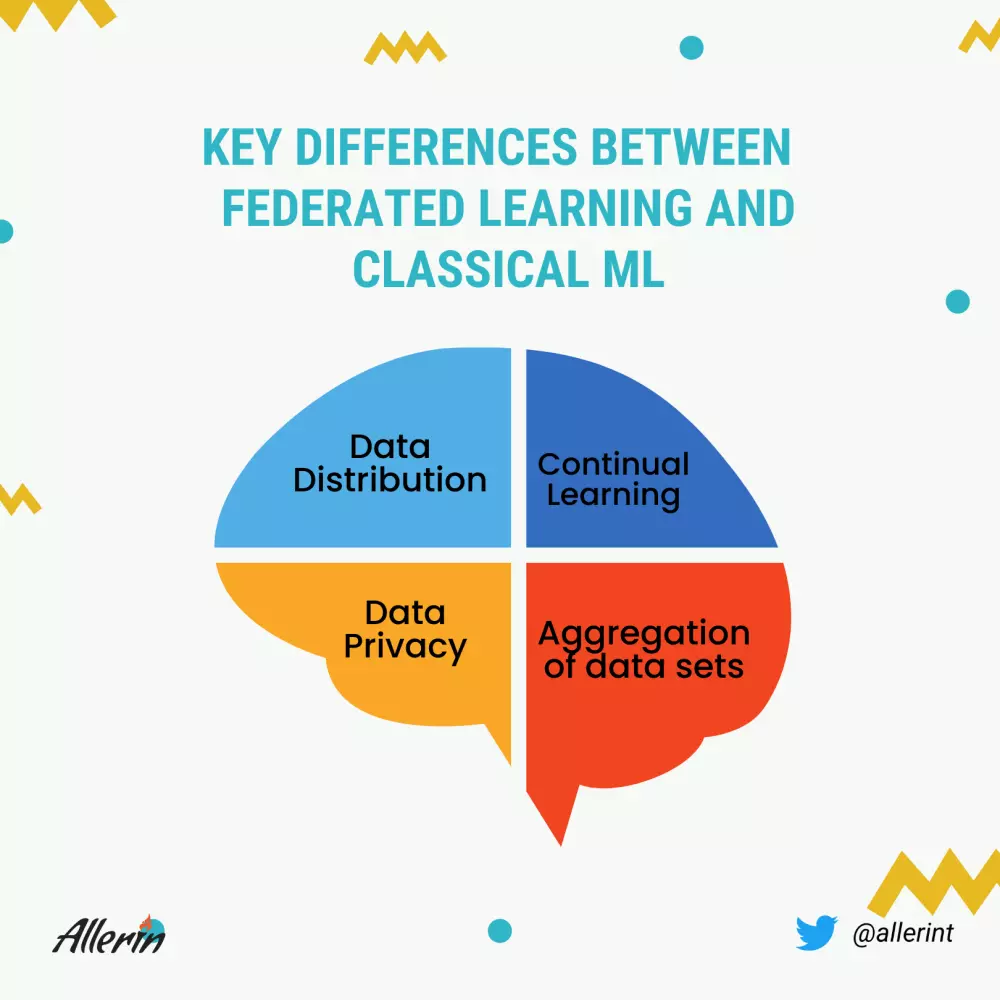Comments
- No comments found

People are paying more and more attention to data security and user privacy in the era of big data.
Data protection has become a priority for both businesses and individuals. Federated learning is the future of AI, in which statistical algorithms are trained at the network's edge.
Artificial intelligence is the foundation of computer learning and it is critical to our future. Computers can process massive amounts of data and apply learned intelligence to make better decisions and discoveries in a fraction of the time it takes humans. The future of AI and machine learning, which has changed data processing for large-scale applications over the previous two decades, is critical to human growth in every discipline.
The main difference between distributed machine learning and federated learning is that in federated learning, each participant initializes the training independently as there is no other participant in the network. Federated learning allows participants to collaboratively train the local models on local data without revealing their sensitive information to the central cloud server.
People have sought to construct a machine that behaves like a person in the post-industrial period. Artificial Intelligence (AI) and Machine Learning (ML) allow machines to learn from their mistakes and improve models without explicitly programming. Most industry areas, such as retail, manufacturing, banking, healthcare, and media, have been changed by AI, expanding into new territory. A new approach called federated learning has been devised. In federated learning, only learning parameters of Deep Neural Network (DNN) are shared between the central server and the participants using multiple local datasets to train other machine learning algorithms without exchanging data.

The data is acquired, and the complete training process is carried out on a single server in classical machine learning. This training poses several privacy risks when the information is shared with the central cloud server. Federated learning has surpassed distributed data training. In particular, federated learning enables participants to train local models cooperatively on local data without disclosing sensitive data to a central cloud server. It allows continuous learning on end-user devices while ensuring no end-user data leaves the device.
In classical ML, the data on the participants is independent and identically distributed (i.i.d). On the other hand, federated learning assumes non-i.i.d because various users have different data types. The data is distributed evenly among all participants. This assumption is theoretically impossible because, in real-time circumstances, the expected and actual number of participants varies. As a result, federated learning splits the number of shards among the participants so that each receives an equal amount of information.
In classical machine learning, a central ML model is developed in a centralized setting using all available training data. This works flawlessly when a central server is available to serve the forecasts. But when users expect quick responses, the communication time between the user device and the central server may be too long to provide a satisfactory user experience. Although federated learning can be implemented on the end-user device, continuous learning is difficult since models are trained on a complete dataset, which the end-user device does not have access to.
Classical machine learning involves aggregating user data in a central location for machine learning training, which may violate certain nations' privacy rules and make data more vulnerable to data breaches. The models in federated learning are constantly upgraded, allowing client input, and there is no need to aggregate data for continuous learning.
The future of AI and machine learning holds exciting potential, with industry experts predicting that the most practical use cases for business-related AI would be customer service. AI and ML will enable systems to scale, build new models on the go, and give more accurate and timely results.
Naveen is the Founder and CEO of Allerin, a software solutions provider that delivers innovative and agile solutions that enable to automate, inspire and impress. He is a seasoned professional with more than 20 years of experience, with extensive experience in customizing open source products for cost optimizations of large scale IT deployment. He is currently working on Internet of Things solutions with Big Data Analytics. Naveen completed his programming qualifications in various Indian institutes.
Leave your comments
Post comment as a guest